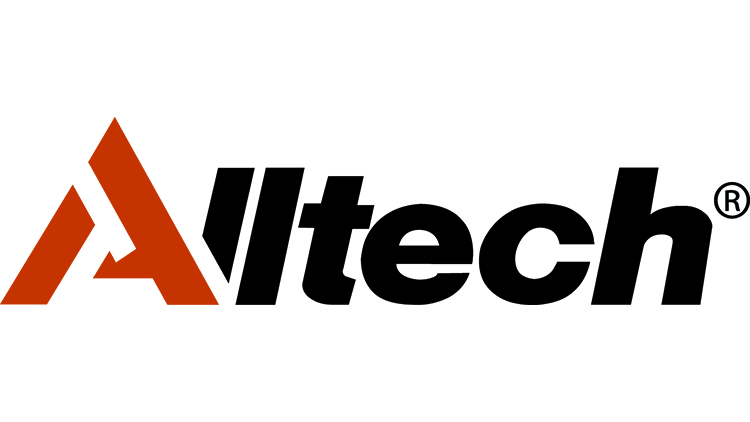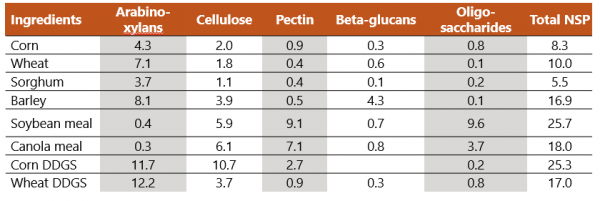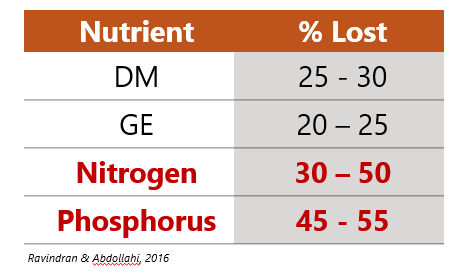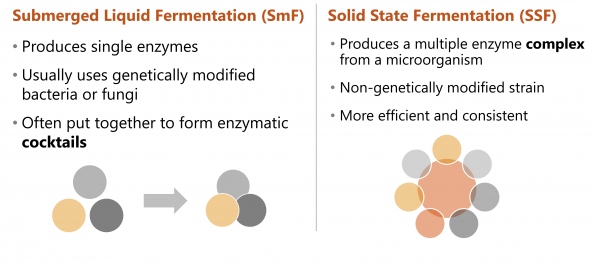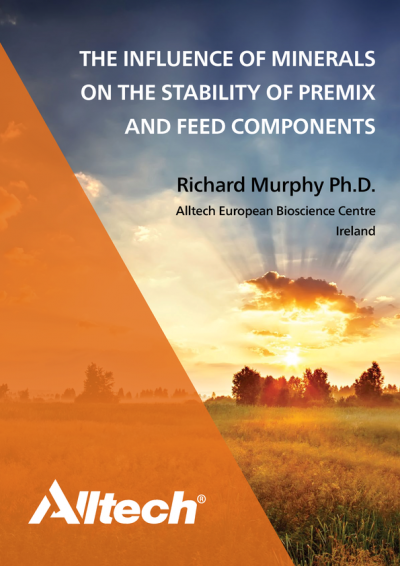Promotional Features
Sustainable feed enzymes are transforming animal nutrition
In the last 60 years, the agriculture industry has accomplished some amazing feats. Global agricultural productivity has nearly doubled since 1960 (USDA ERS, 2021). Animal production has nearly tripled in outputs while inputs for land and labor have only risen by about 30% globally.
However, producers still grapple with many challenges. In the livestock industry, some of the biggest concerns center around feed: the rising costs, feed efficiency and the availability of common feed ingredients. With feed accounting for up to 70% of production expenses, many livestock producers are adding exogenous enzymes to their feeds to improve nutrient digestibility and lessen the financial impact of rising costs and poor feed efficiency.
Production expenses rising, grains production decreasing
Prices for corn, soybeans and other key feed ingredients have skyrocketed in the past year. Global production of cereal grains is expected to decline in 2022 for the first time in four years, according to the Food and Agriculture Organization (FAO). While the FAO is focused on human food production, similar declines are being observed for key feed ingredients. And it’s not just commodity pricing. Soaring inflation has affected costs for transportation, energy, specialty ingredients and more.
Tight grain supplies and inflation reflect the impact of climate change as well as other geopolitical events on crop production. The International Grains Council reports that global inventories of all harvested grain will reach an eight-year low at the end of this crop year. Meanwhile, Dutch financial services company Rabobank predicts feed costs to rise 20% year-over-year through 2023. These issues are likely to drive increased use of byproducts and nonconventional feedstuffs.
Feed efficiency on the decline
Feed efficiency has steadily declined over the past decades. Crop producers have developed varieties of production methods to increase the nutrient content of feeds. As a result, while grain volume used may stay steady or decline, metabolizable energy used for animal feed has risen comparably with animal outputs. A significant portion of the available nutrients in animal feeds are undigested. This is a problem not only for the producer, who loses money as a result, but for the environment as well. Digestion is often limited by antinutritional factors such as phytate and tannins that lock up nutrients (Figures 1 and 2). Combating these compounds is a focus of much nutrition research.
Figure 1: Non-soluble polysaccharides (NSPs) in feed ingredients
Figure 2: Nutrients lost in broiler manure
Amid these concerns, how can producers keep their animals performing at their best while simultaneously maintaining profitable operations? Using feed enzymes is one of the most promising answers to these questions. Feed enzymes not only help improve digestibility and decrease the environmental impact of agriculture; they also help producers save money.
What are feed enzymes?
Enzymes are protein-based molecules that convert undigestible components of feed into more accessible forms, allowing the animal to utilize feed and the nutrients it contains more successfully. Enzymes transform other molecules by attaching to them, releasing the nutrients and energy in those molecules, thereby making them available to be absorbed by the animal.
A wide range of enzymes are available on the market, differing in production method, activity and use case. Enzymes are complex molecules produced commercially through microbial fermentation (Figure 3). Most enzymes are produced by means of liquid fermentation using microbe strains selected or genetically modified to produce a single, specific enzyme. Because of the multiple substrates included in animal diets, resulting in a mix of antinutritional factors and inaccessible nutrients, it is critical to use a product with multiple enzyme activities. Liquid fermentation enzymes are often mixed to meet this need. However, the use of multiple single enzymes, or a blended enzyme product, can lead to inefficiencies and non-performance results in feed. Enzymes in a blend can compete for substrates and inhibit or inactivate each other.
Figure 3: Two methods for producing enzymes
Single-complex enzymes are more versatile
Alltech uses a unique solid-state fermentation process with microbial strains that produce several enzymes in a single complex. Enzymes produced in a single complex work in synergy with the animal’s digestive tract. This allows Alltech’s enzyme solutions to promote improved digestibility and enhanced nutrient use across a wide range of feed materials.
Alltech has invested in numerous solid-state fermentation Ph.D. programs, with eight postdoctoral researchers who focused solely on the solid-state fermentation process. These programs focus on how to improve production efficiencies within the fermentation system and target the enzyme activities of the finished product to the nutritional concerns of livestock producers. Alltech’s research in this area has focused on the use of non-GMO organisms to bring more sustainable technology to the industry.
Over the past three years, Alltech’s research in enzyme technology has been directed toward product development with a focus on greater nutrient release. Several trials studying next-generation enzyme complexes in poultry feeds have been conducted recently, and more are in progress globally. The results have confirmed that including enzymes in animal diets can help producers save money on feed ingredients without compromising performance.
Alltech’s Allzyme Spectrum* is the next-generation multi-enzyme complex that maximizes nutrient utilization by breaking down the problematic substrates typically found in a poultry diet, such as non-starch polysaccharides (NSPs) and phytic acid. Allzyme Spectrum has proven efficacy in laboratory research, university trials and commercial settings. This extensive work has shown that Allzyme Spectrum can save 90 calories per kilogram of feed in non-organic poultry diets. This efficiency gain provides flexibility in reformulation through the use of alternative raw materials, helping producers save money.
Efficiency and cost savings are not the only benefits of enzymes. Perhaps even more importantly, enzymes contribute to sustainable animal production, as they work to help the animal better digest their feed and, in turn, keep nutrients from being excreted back into the environment. When animals can better digest and absorb the nutrients in their food, the likelihood decreases significantly that those nutrients will return to the environment instead of being utilized.
Better performance, lower costs, reduced environmental impact
The application of enzyme products in animal feed is an essential nutritional strategy to tackle key issues facing animal production. Alltech’s range of enzyme technologies maximize feed efficiency by increasing nutrient absorption and digestibility of feed, which results in lower production costs and improved animal performance. As a result, fewer nutrients are released into the environment, saving producers money while providing sustainable benefits for the animal and the planet.
* Allzyme Spectrum is only available in select regions. References available upon request.
